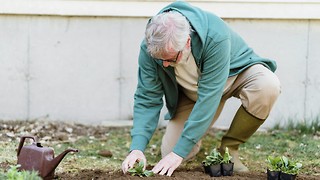The Art of Stagecraft
Áron Penczu celebrates the unsung heroes of Cambridge theatre

It’s 7.40pm inside the ADC. The audience is seated: scattered chatter before the start of the show. The safety curtain is still up. Behind it, techies crouch soldering, fiddling with wires, checking plugs. Five minutes to go, and there’s still something wrong with the LEDs.
Anxious actors peer at them from the wings: the audience is growing restless. For three hours they’ve been trying frantically to get the lights to work. Finally, at 7.45pm, the signal is given. The techies give up, the safety curtain sinks down out of view. The show must go on.
It’s the opening night of ENRON, and the LEDs in question are meant to mark out subsections of the stage. They’ll be missed most in the lightsaber dance-scene, when the stage is largely black. Today they are unfixable, and the performance continues without them – for the rest of the week they’ll work fine. ENRON will receive three rave reviews, and most of the audience will go home none-the-wiser. It almost makes you wonder if a set like this is worth the trouble at all.
It’s an uphill task at best, stagecraft. Interested? Expect to spend anywhere from weeks to months putting in four-hour shifts at the club. Then get ready for the run-up. In the days before you open, people around you will help you keep to the ‘sixteen-hour rule’ – that you work no more than sixteen hours a day. In most cases, you’ll work no less. It’s not particularly remunerative: unpaid, of course, but also largely unappreciated.
Excepting techies and thesps, few people know what you do. Most people have never even heard of camdram. And the roles themselves (set designer, tech director, stage manager, stage hand) tell only a fraction of the story. Everything from planning and designing an entire mise-en-scène to merely formalising a director’s vision can fall under the scope of tech director. If you’re lucky enough to receive a review mention, chances are it’ll attribute something wrong.
Most techies are in it for the pleasure of the work itself, of building something from scratch. With set budgets of up to £3,500 (for a really ambitious Footlights pantomime), it’s possible to make something quite extraordinary. There is satisfaction to be gleaned from the realisation of a concept, and puzzles to be solved, solutions to be improvised.
Unlike much in Cambridge, it’s all hands-on. Touring companies like CAST or the ETG present their own challenges and opportunities: assembling and taking apart a helter skelter every day, for example, or building a table that can fit in a suitcase.
Techies who do a lot of backstage work are passionate in their involvement, people who go to shows to see particular sets. Or sitting anonymously in the audience, gazing upon their own handiwork, they savour the moment of completion, the clamour of applause. Illiterate in the practicalities of stagecraft, we must seem purblind to them.
The informal community of Cambridge techies, past and present, call themselves Sods, after ‘shafts of darkness’ – the narrow, unlit stage-sections that can occur when you use multiple lights to achieve ambient illumination. There are old Sods, graduates of long ago, and Sodlets, children of two Sods. At their annual dinner they share anecdotes and pass on knowledge.
Though there is competition for prestigious positions on the higher-budget mainshows, smaller plays can struggle to get applications, and many roles are filled only by direct request. As a consequence, practically anyone who’s interested can get as much experience as they want, and practised hands – often old Sods – help mentor newcomers through their first shows.
I went to see ENRON on its third night, when the LEDs were working fine. Light is what I remember first of the show when I think of it. The play was beautifully executed, full of energy and excitement, and I left the ADC raving.
Perhaps Robert Eager, one of the geniuses behind its design, was pleased when he read the reviews. ‘Most of all,’ wrote Hugo Havranek of the Tab, “the set and tech gave the play a high-budget feel: glitz and glamour, a fantastic exterior; that is what the play did best.” Or perhaps it didn’t matter. Perhaps Rob knew already that the set was exceptional, that the play would be incalculably poorer without it. That stagecraft was worth it after all.
 News / Uni Scout and Guide Club affirms trans inclusion 12 December 2025
News / Uni Scout and Guide Club affirms trans inclusion 12 December 2025 News / Cambridge Vet School gets lifeline year to stay accredited28 November 2025
News / Cambridge Vet School gets lifeline year to stay accredited28 November 2025 Science / Did your ex trip on King’s Parade? The science behind the ‘ick’12 December 2025
Science / Did your ex trip on King’s Parade? The science behind the ‘ick’12 December 2025 News / Cambridge study finds students learn better with notes than AI13 December 2025
News / Cambridge study finds students learn better with notes than AI13 December 2025 News / Pembroke to convert listed office building into accom9 December 2025
News / Pembroke to convert listed office building into accom9 December 2025







